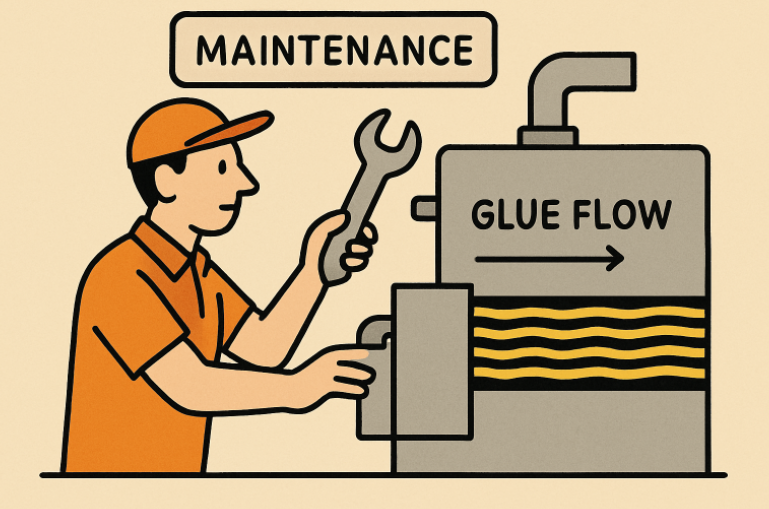Introduction
Industrial adhesive systems are foundational to numerous manufacturing sectors, ensuring the structural integrity of products from consumer electronics to automotive vehicles. Properly maintaining these systems can distinguish between smooth production runs and expensive downtime. With adhesive equipment in continuous use, attention to detail is required to prevent inconsistent bonding, system failures, and unnecessary material waste. For manufacturers looking to source reliable packaging adhesives and tools, services like https://nxtlevelpack.com/packaging-supplies/ offer a wide selection of packaging supplies for industrial needs.
Achieving optimal performance and longevity in adhesive systems demands a proactive, systematic approach to maintenance. Frequently encountered challenges range from equipment breakdowns and overspray to fluctuating material viscosities, which can undermine product quality and profitability.
Addressing these recurring issues is vital as industries strive to improve output while managing operational costs. Understanding fundamental maintenance principles and advanced troubleshooting techniques ensures adhesive systems provide reliable, high-quality bonds essential to end-product performance. With the rise of digital transformation in manufacturing, new solutions are enhancing predictive capabilities and maintenance efficiency.
Common Maintenance Challenges
Inconsistent Adhesive Application
Variations in dispensing adhesives can quickly lead to product defects, productivity losses, and excessive rework. Temperature fluctuations, uneven surface preparation, and differences in adhesive viscosity are common culprits behind uneven bonding. To counteract these challenges, manufacturers benefit from standardized operating procedures, strict control over environmental variables, and regular equipment calibration. Adhering to these best practices ensures a uniform application that supports repeatable, high-quality results.
Material Waste and Overspray
Inefficient dispensing systems and poor spray parameter settings can significantly contribute to waste, increasing costs and maintenance demands. Overspray often leads to adhesive buildup on machinery, requiring more frequent cleaning and risking unscheduled downtime. Implementing routine checks and adjustments to spray nozzles, alongside continuous operator education, helps reduce waste and improve line efficiency.
Equipment Breakdowns
Even robust adhesive systems are not immune to wear and tear. Unplanned breakdowns disrupt workflows and can necessitate costly emergency repairs. Establishing a maintenance schedule that includes routine inspections, preemptive part replacements, and performance monitoring can uncover potential issues before they escalate. According to Assembly Magazine, robust preventive maintenance minimizes breakdowns and boosts system longevity and production yields.
Effective Maintenance Strategies
Regular Cleaning and Inspection
Daily exterior cleaning and scheduled flushing of adhesive delivery lines are crucial steps to prevent clogging and maintain steady system performance. Technicians should inspect hoses and nozzles for hardened residues and check electrical connections for signs of wear, burn marks, or loose fittings—maintaining operational safety and product quality.
Temperature Monitoring
Precise temperature management throughout the adhesive process is vital. Excessive temperatures can result in adhesive degradation or burning, while temperatures too low tend to cause stringing and incomplete bonds. Using precision temperature controls and routinely checking both equipment readings and gauge calibrations is critical for consistent outcomes.
Operator Training
Well-trained operators are indispensable to the proper functioning of adhesive systems. Comprehensive training programs should cover initial equipment setup, regular care and maintenance routines, troubleshooting best practices, and safety protocols. Empowering team members with the latest knowledge minimizes user errors and maximizes system uptime.
Advanced Troubleshooting Techniques
Addressing Nozzle Blockages
Clogged nozzles can abruptly disrupt production lines by causing irregular adhesive flow. Routine inspection, cleaning, and timely replacement of nozzles help maintain consistent flow and avoid unexpected interruptions. Implementing visual checks and employing high-quality filtration can further prolong component life.
Ensuring Consistent Adhesive Viscosity
The adhesive’s performance depends significantly on its viscosity, which may be affected by improper storage or environmental fluctuations. Facilities should monitor storage conditions—especially temperature and humidity—to maintain material consistency. Digital sensors and climate-controlled environments provide additional safeguards, ensuring adhesives perform as intended.
Implementing Predictive Maintenance
Predictive maintenance allows facilities to detect anomalies and predict failures before they affect operations by leveraging data analytics and connected sensors. By integrating sensor data with digital monitoring platforms, manufacturers access real-time diagnostics, streamline maintenance activities, and schedule repairs at optimal intervals. According to IndustryWeek, predictive technologies deliver measurable improvements in uptime, cost savings, and plant safety.
Final Thoughts
Maintaining high-performance industrial adhesive systems hinges on a blend of daily diligence and adopting modern, technology-led practices. Manufacturers can greatly diminish the risk of downtime and product rejections by tackling issues such as inconsistent application, overspray, and breakdowns with structured maintenance routines, ongoing employee training, and predictive digital tools. These efforts ensure the durable, reliable, and cost-effective delivery of adhesives—directly supporting production targets and market reputation.







